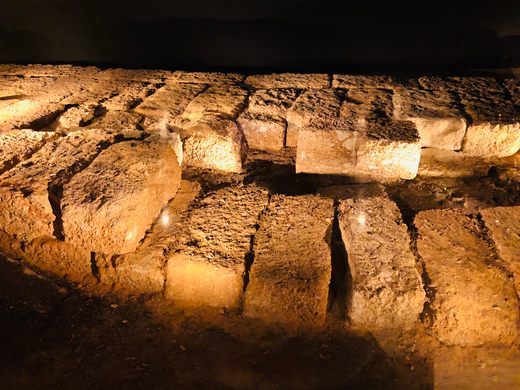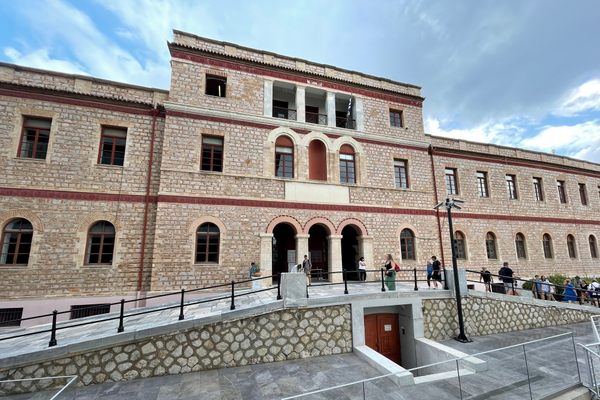Divani Palace Acropolis Fortification Wall
A preserved portion of an ancient Athens barrier is displayed in a hotel basement.
Athens has had numerous fortification walls around the city since ancient times. When the Second Persian War ended in 479 BC, it resulted in the destruction of most buildings, statues, and walls in and around the city. After the departure of the Persians the citizens began planning the rebuild of the city. Athenian statesman Themistocles feared a return of the Persians and urged the citizens to prioritize building the fortification walls. They agreed and did so using scavenged material, primarily spoila from the buildings and monuments destroyed by the Persians mixed together with mudbrick, to create the Themistoclean Wall.
A portion of the Themistoclean Wall passed through the pine-clad slopes of Filopappou Hill, an area just south of the Acropolis. That area thrived until the 12th century AD, when a steady decline in the population began. The area was pretty much abandoned by the beginning of the 13th century and was not heavily repopulated until the post-Ottoman era when working class residents moved in. During this time, much of the wall was used during the building process and most of the rest of it disappeared over the next several decades.
The area experienced a building boom in the 1960s and 1970s and several project excavations revealed ancient ruins and artifacts. One of these projects was the Divani Palace Acropolis hotel. While excavations were taking place a large portion of the Themistoclean Wall was discovered. Because Greece has strict laws protecting archaeological sites and artifacts, the hotel’s renovation plans were tweaked to both protect the ancient wall and allow the public to admire it. As part of the new plans, it was decided to display the wall on the building’s lower level, immediately at the bottom of the main staircase in the lobby.
Know Before You Go
This southwest portion of the Themistoclean Wall is on display 24/7 in the lower level of the Divani Palace Acropolis hotel. There are stairs and an elevator that access this level. The area is cavernous and noise carries, so it is asked that voices be kept down. Hotel security is monitoring the area on CCTV cameras and roving officers are present to protect the wall and artifacts. The hotel staff have basic knowledge of the display, are not archaeology experts (nor expected to be) and are deserving of respect.
The largest standing portion of the wall is on display at the archaeological site of Kerameikos (northwest portion of wall). This site displays the remains of the wall outdoors. The site requires a fee to enter; however, there is great viewing from public areas outside the paid site.
























Follow us on Twitter to get the latest on the world's hidden wonders.
Like us on Facebook to get the latest on the world's hidden wonders.
Follow us on Twitter Like us on Facebook